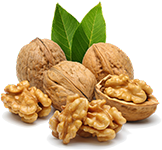
- Famous Brand Promotion:
 010-63457516
010-63457516 -

 Favorites
Favorites

 010-63457516
010-63457516
 Favorites
Favorites
Demands
for imported food have increased constantly with increasing of living standard
of Chinese residents. China has imported food with the value of USD 22.23
billion in the first half of 2015, which has increased by 4.2 times for ten
years with annual average growth rate of 17.6%. Import volume for staple
commodities such as edible vegetable oil, milk powder, meat and aquatic products
has respectively reached 3,395,000 tons, 614,000 tons, 1,325,000 tons and 2,006,000
tons in the first half of 2015. Imported food safety has become the critical
issue for guaranteeing safety of Chinese consumers.
China
has imported 552,000 batches equivalent to 20,352,000 tons and USD22.23 billion
from 179 countries or regions in the first half year of 2015, which has
obtained a year-on-year growth of 11.9%, 21.2% and -10.8% respectively. The
first ten trade volume of imported food is respectively: European union, ASEAN,
America, New Zealand, Brazil, Australia, Russia, Canada, Ukraine and South
Korea; main categories of imported food are grease and oil paints, dairy
product, aquatic product, meat, cereal grain product, alcohol, sugar and
beverage.
State Quality Inspection Administration has further improved
safety supervision system for imported food, further strengthened inspection
and quarantine supervision for imported food, implemented responsibilities of
producers and operators of imported food, actively boosted common governance of
food safety in the globe and effectively guaranteed safety of imported food in the
first half year of 2015, therefore, no major imported food problem has happened
in the first half year of 2015. It has returned or destroyed 1225 batches of
disqualified imported food (equivalent to 1,452,000 tons and USD14,520,000)
from 57 countries or regions in the first half year of 2015, which has obtained
a year-on-year decrease of 12.3%, 31.8% and 67.6% respectively. In which:
beverage, pastry, grain and product are main disqualified food categories; main
reasons for disqualified imported food include: disqualified food additive,
polluted by microorganism and poor quality.
State
Quality Inspection Administration has issued “Imported Food Quality and Safety Situations
of China in 2014 (white paper)” on world health day (April 7), which has
attracted wide attentions from all walks in the society. Issuing of “Imported
Food quality and safety situations of China in 2014 (white paper)” will better
guide the whole society to know overall situation of imported food, build
information sharing platform among the government, enterprise and consumers and
provide reference for all levels of inspection and supervision departments to
implement imported food supervision work. Meanwhile, it has provided basic data
support for quality safety management and development strategy of China’s food
industry.